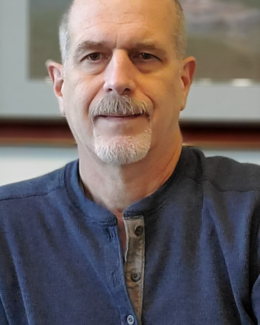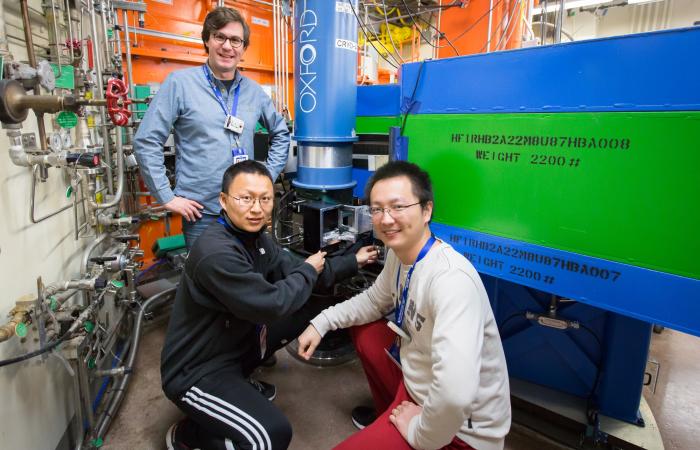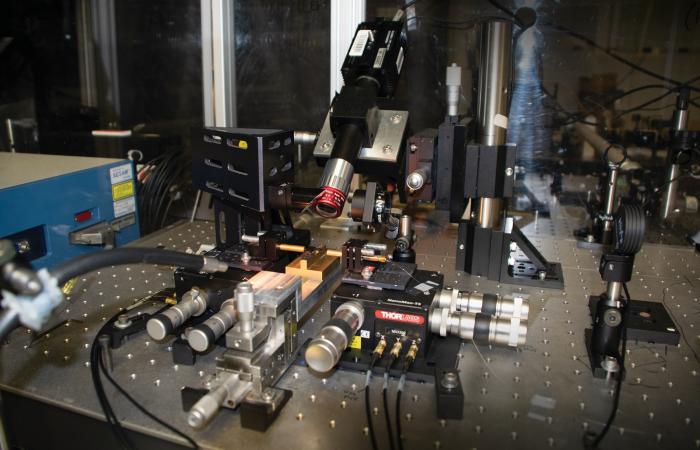Going big to study the very small
A reality in science today is that in order to study the smallest, most fundamental elements of nature, scientists need access to some of the world’s largest and most powerful research centers — with facilities often costing billions of dollars.
The instruments and supporting technologies at these facilities are necessary to explore the atomic, subatomic, and quantum structures and processes that form the most basic physical properties of materials and chemical processes.
Unlike research in many other areas, the discoveries enabled by these explorations often don’t have immediate practical application. Rather, they give us insight into how the universe is put together.
“Observing and understanding the fundamental nature of materials typically doesn’t lead immediately to developing and using the materials in everyday applications,” said Martin Mourigal, associate professor at Georgia Tech. “But in the future, scientists can take today’s discoveries and build on them to develop new and practical applied technologies.”
Mourigal and his students are frequent users of ORNL’s neutron science facilities, where they study the basic properties of both natural and manmade materials.
“Basic science, or fundamental science, primarily involves the pursuit of knowledge purely for knowledge's sake,” he said. “It differs from applied science in that it can take years or decades to employ basic science discoveries for practical purposes.”
At ORNL, the Spallation Neutron Source, High Flux Isotope Reactor and Center for Nanophase Materials Sciences are user facilities devoted primarily to basic research. These facilities serve the global scientific community’s pursuit of fundamental science questions and challenges. All three are supported by the DOE Office of Science, the single largest supporter of basic research in the physical sciences in the United States.
SNS is based on a nearly 1,000-foot-long linear accelerator and is one of the most powerful neutron sources in the world. The accelerator delivers a 1.4-megawatt pulsed stream of protons at nearly 90 percent of the speed of light to enable the world-class capabilities of its 19 neutron instruments.
SNS provides researchers with neutron beams that permit high resolution and a broad range of energies to use in experiments. The pulsed neutrons SNS produces are called “thermal” neutrons because their energy matches that of the jiggling motion of atoms at room temperature. Thermal neutrons have wavelengths of a few tenths of a nanometer, ideal for experiments such as determining the positions of atoms in solids and chemical reactions. Such studies have led to better understanding of phenomena such as magnetic order, superconductivity, and thermoelectricity in a variety of materials.
Complementing the SNS is the High Flux Isotope Reactor, an 85-megawatt nuclear reactor in which nuclear fission produces a steady stream of neutrons as a byproduct.
HFIR produces both thermal and “cold” neutrons, which are labeled as cold because they are passed through a cryogenically cooled moderator containing liquid hydrogen. This slows them down to produce less-energetic, longer-wavelength neutrons better suited for examining materials with lower-energy motions of atoms and magnetic interactions as well as larger structures — for example, the magnetic fluctuations in quantum materials or the spacing between groups of atoms in a protein.
In a typical year, the SNS and HFIR combine to host about 1,300 users from academia, industry and government who travel across the nation and from around the world to access these unique user facilities. The scientists have used the neutrons at SNS and HFIR to achieve breakthrough discoveries in materials science, such as in materials used for energy storage, medicines and vaccines, polymers and many other applications.
Neutrons are especially useful for observing lighter elements, such as hydrogen atoms, inside materials and biological samples. This makes neutrons ideal for many experiments, such as tracking the location of lighter atoms in lithium compounds inside batteries — typically without compromising or harming the samples.
“Our group’s research at the SNS and HFIR is considered basic research because we investigate the behavior of electrons and atoms in materials,” Mourigal said. “That’s the grand challenge of basic science — predicting the behavior of matter, energy, and information from the laws of quantum mechanics that guide interactions between microscopic constituents. Without the unique, world-class capabilities of the SNS and HFIR, we could not do that research. We would simply not be able to study the materials and make discoveries as we’ve done over the years.”
A third user facility for basic science at ORNL is the Center for Nanophase Materials Sciences. CNMS provides users with a wide range of specialized tools for imaging, synthesis, characterization and fabrication of novel nanoscale materials and assemblies, including the integration of hard and soft materials. These tools include optical and laser spectroscopy instruments, scanning probe microscopes, soft-matter transmission electron microscopes, scanning transmission electron microscopes, and helium-ion and atom-probe electron tomography instruments. A Class 1000 cleanroom environment facilitates controlled synthesis and directed assembly of nanomaterials.
Like all ORNL user facilities, CNMS, SNS and HFIR offer the national and international user community access to staff expertise, facilities and capabilities based on peer-reviewed proposals. Users submit their research proposals for review by independent scientists to ensure the most promising experiments are chosen. Scientists whose proposals are selected can conduct their research at no cost to them or to their institutions and companies, as long as they publish their results.
CNMS also acts as a gateway for the nanoscience community to benefit from ORNL’s neutron sources and computational resources. The user facility typically hosts over 600 unique users per year, with about 50 percent coming from American universities. Depending on the scope of work, users conduct research at CNMS lasting from as little as a few days to as much as several months—with some long-term projects even spanning years.
One user, Vanderbilt University researcher Sami Halimi, recently obtained his Ph.D. based on basic science experiments he conducted in large part at CNMS. He works in Professor of Electrical Engineering Sharon Weiss’ research group at the university, about a 2.5-hour drive from ORNL.
“My research involved using electron beam lithography at the CNMS to create extremely small photonic structures,” Halimi said. “This included creating microscopic and nanoscopic waveguide devices on a chip that uses light, or photons, to transmit data as opposed to the electrons used by conventional computer chips.”
He added, “Vanderbilt’s Weiss research lab has a long-standing relationship with the CNMS, and this has helped maintain excellent continuity for our students performing research there. Newer students benefit from the experience passed along by the more senior ones, so they don’t need to start from scratch having CNMS staff teach them how to use the instruments and equipment.”
Halimi described how continuity of student expertise and experience offers benefits beyond current research projects. “A lot of schools that don’t have access to federally funded user facilities like we do tend to teach curricula focused on simulations, whereas students here can do the same types of modeling and then also conduct hands-on experiments at ORNL to validate those simulations.”
Business and industry also benefit from access to ORNL’s basic user facilities. This effect can be seen at DOE user facilities around the nation, where companies often locate nearby to have ready access to the research centers. The result is a mutually beneficial relationship as these firms help grow the local economies by directly and indirectly creating jobs and enlarging the tax base.
Finally, one of the most important benefits of ORNL’s user facilities is that they play a large role in helping train future generations of scientists.
“When my students are arranging experiments at ORNL, they are responsible for contacting the user office, doing the paperwork, coordinating with the instrument scientists and facility staff, and handling many other details that help them learn soft skills, including people skills,” Mourigal said. “This ties into the nation’s National Quantum Initiative, designed, in part, to facilitate training our nation’s future quantum workforce — because when we use neutrons, we often deal with complex quantum systems.”
Mourigal explained that these basic science skills will not only benefit the collective U.S. scientific community but can also serve individual students well after they graduate and enter the workforce outside of academia.
“By providing students with neutron scattering expertise, I believe we are training tomorrow’s high-level scientists, engineers and citizens to succeed in overcoming the nation’s and world’s many challenges that lie ahead.“





